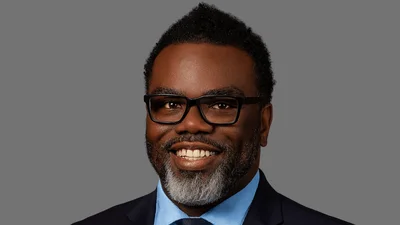Although the launch of a North Korean missile on Nov. 28 spurred talk of changing U.S. strategy toward the potential military threat, there was actually no need to worry, according to Jim Carafano, vice president of foreign policy and national security at the Heritage Foundation.
In remarks made during the Nov. 29 broadcast of the "Chicago's Morning Answer" radio program, Carafano argued that the missile launch was only a predictable step in Pyongyang's nuclear pursuits. "Chicago's Morning Answer" is co-hosted by Dan Proft and Amy Jacobson. Proft is a principal in Local Government Information Services, which owns this publication.
"If you actually look at the development path of a nuclear program, what they're doing is the steps you would normally see," Carafano said. "Each step isn't a new provocation or exchange, it's just something (expected) coming off the assembly line."
Carafano's assessment, however, seemed to fly in the face of the media alarm over the missile capability, as Proft and Jacobson pointed out. Pictures of the launch allegedly "show a major advancement in technology for the Korean nation," according to a Nov. 30 report in The New York Times.
"I thought they said it could reach California or Washington," Jacobson said. "Was that just a lie?"
"What they've done is prove they can fire a missile that goes a long way," Carafano said. "They have yet to show they can mount a small-enough nuclear warhead on it, or that they can solve the problem of re-entry."
The whole idea of a strategy is that you make a plan that is feasible and reasonable and if you stick to it over time you will achieve the outcomes that you want, according to Carafano.
“But isn’t part of that plan to derail North Korea’s nuclear program before its fully actualized?” Proft asked.
Carafano said getting the Asian country to abandon its nuclear pursuits wasn’t realistic because it would require either forced regime change or voluntary change of heart.
“None of those things are going to happen,” he said. “What are our goals here? One, that there’s not a war in southeast Asia, and the other is that Kim (North Korea's leader Kim Jong Un) does not (develop) a capability that could threaten us.”
Carafano said the current strategy under President Donald Trump involves maintaining sanctions while the U.S. boosts its missile defense capability so high that it would deter Kim from ever launching an attack. He also said missile defense requires the ability to intercept a hostile missile just minutes after it leaves the launch pad, either with a drone or satellite interceptors.
Those options had weakened under the previous administration, according to Carafano.
“The problem with missile defense under (President Barack) Obama was that he was willing to do it (only) because he didn’t want to accept the criticism for not doing it,” he said. “But he (said), ‘give me enough missile defense so I can credibly say I have something that matches what NK might potentially do.’”
As Carafano explained, Trump’s plan of applying sanctions and boosting defense differs markedly from that of the previous administration.
“Everybody says, ‘we’ll have a crisis’, but the longer we stick with this strategy, the less likely that is,” he said. “If the sanctions are working, our military defense will be so robust, they essentially can’t touch us. If we stick with this strategy, North Korea becomes less dangerous, not more.”




 Alerts Sign-up
Alerts Sign-up